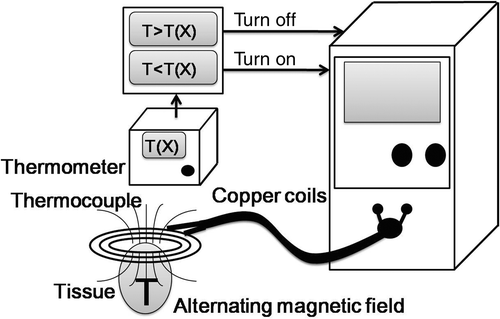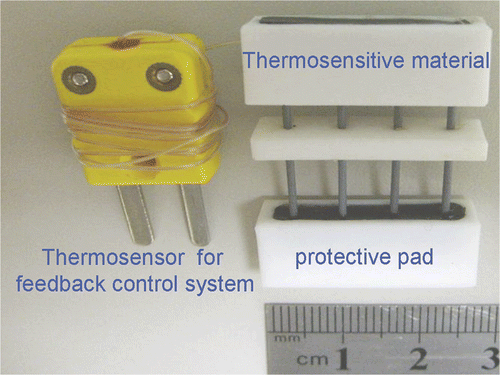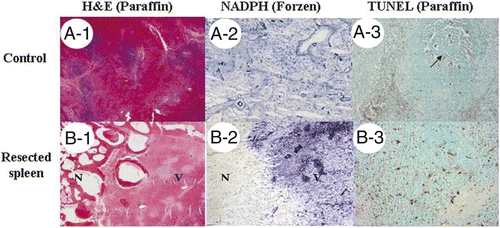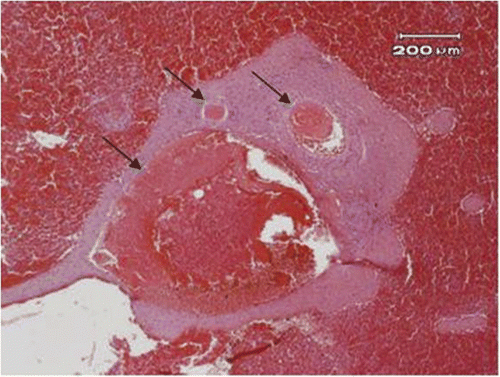Figures & data
Figure 1. A schematic diagram of the electromagnetic thermal surgery system used in the study. The system was designed in our laboratory and custom-made by a commercial manufacturer.

Figure 2. Comb-needle array used in this study. Note that the conductive coil and plug provide feedback to the control system to obtain the correct needle temperature. There is a temperature sensor embedded in one of the needles, which is connected with the plug. The needles are separated by 0.5 cm and can be of various lengths. The needle array has a protective pad over the sharp end. The pad will be applied after tissue penetration and before heating.

Figure 3. Procedures of the partial splenectomy using the electromagnetic thermal surgery system. (A) The needle arrays were inserted 15 cm from the tip of the spleen. (B) After heating, the Thermolite attached to the needle arrays changed colour from black to white when the temperature was above 70°C. (C-D) The cut surfaces of the spleen showed effective coagulation without signs of oozing.

Figure 4. Histological examination of surgical margins. (A) Control splenic tissue (A1) was positive for NADPH-diaphorase activity (A2) and showed apoptosis only within the white pulp under TUNEL assay (A3). (B) Immediately resected spleen (B1) showed loss of NADPH (B2) in necrotic area (N) compared to viable splenic tissue (V). Increase of apoptosis in necrotic area was also noted (B3). (A1, A2, B-1, and B2: magnified 10×; A3 and B3: 100×).

Figure 5. Histological examinations of remnant spleen. (A) The remnant spleen was removed 14 days after the procedure; arrow points to the dense adhesions. Histological examination showed a fibrous band (F) between viable splenic tissue (V) and necrotic tissue (N) (B: HE stain; C: Masson's trichrome stain; D: NADPH stain, for viability from frozen section; E: TUNEL assay from paraffin block; B-D: 10×, E: 100×).

